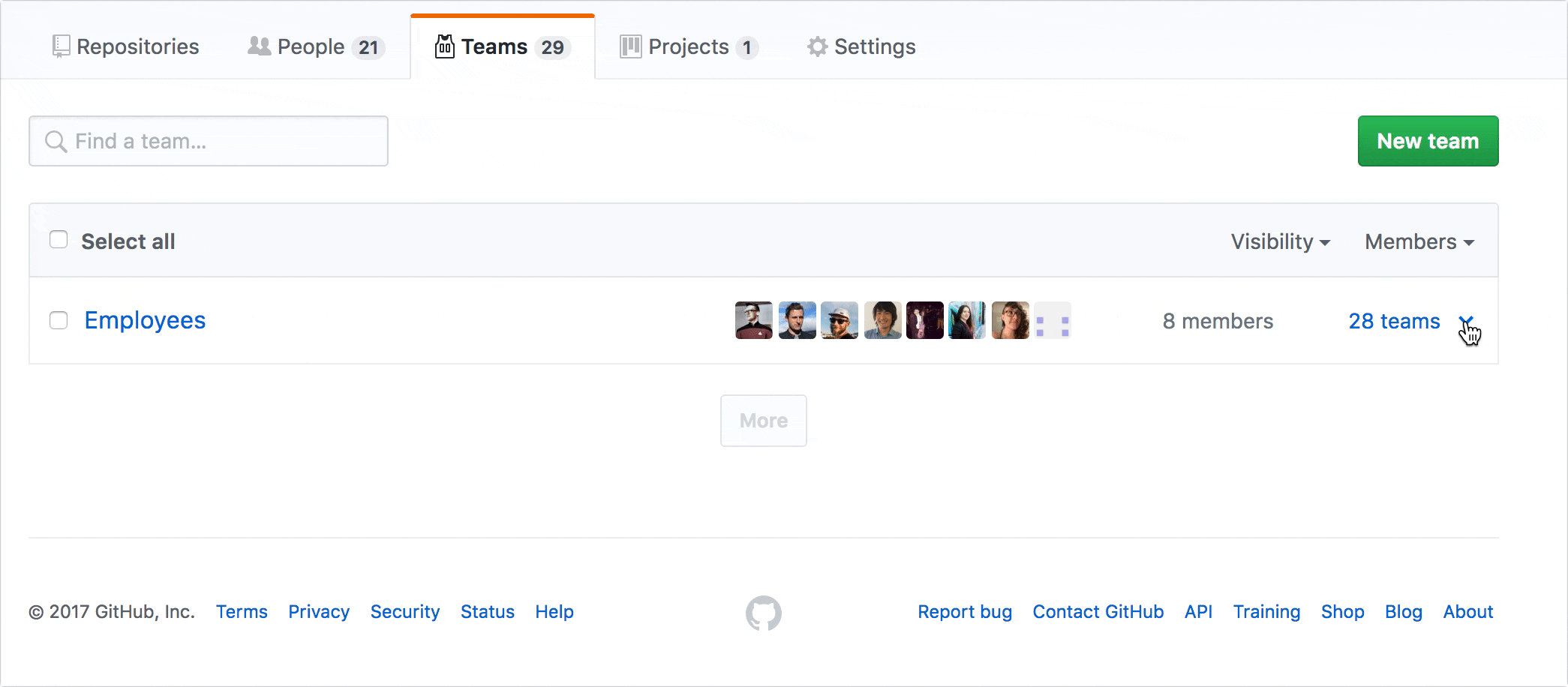Nested teams add depth to your team structure
Now you can use multiple levels of nested teams to reflect your group or company’s hierarchy within your GitHub organization, making your organization’s permissions structure clearer and easier to manage.…
Now you can use multiple levels of nested teams to reflect your group or company’s hierarchy within your GitHub organization, making your organization’s permissions structure clearer and easier to manage.

Child teams inherit their parent’s access permissions, so repository permissions and @mentioning among nested teams work from top to bottom. If your team structure is Employees > Engineering > Application Engineering > Identity, granting Engineering write access to a repository means Application Engineering and Identity also get that access. And if you @mention the Identity Team or any other team at the bottom of the organization hierarchy, they’re they only ones who will receive a notification.
Membership inheritance from parent to child teams isn’t automatic. If you’re a member of Engineering and someone creates a child team called Security, team members of Engineering aren’t automatically direct team members of Security. Security and all other teams nested under the Engineering will inherit repository permissions and @mentions but nothing else.
Check out the documentation to learn more and start structuring your existing teams!
Written by
Related posts

We need a European Sovereign Tech Fund
Open source software is critical infrastructure, but it’s underfunded. With a new feasibility study, GitHub’s developer policy team is building a coalition of policymakers and industry to close the maintenance funding gap.

GitHub Availability Report: June 2025
In June, we experienced three incidents that resulted in degraded performance across GitHub services.

From pair to peer programmer: Our vision for agentic workflows in GitHub Copilot
AI agents in GitHub Copilot don’t just assist developers but actively solve problems through multi-step reasoning and execution. Here’s what that means.